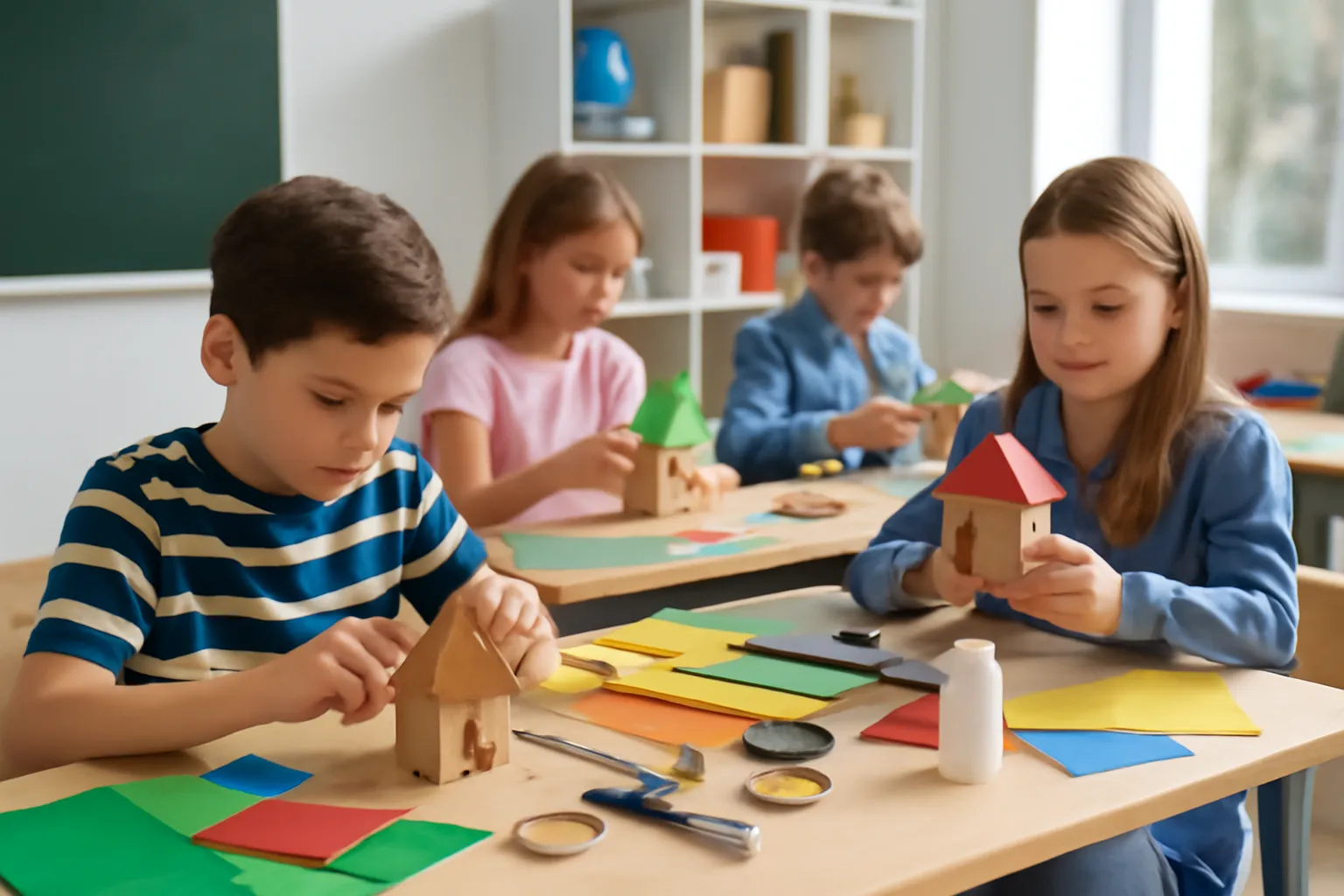What if learning could go beyond textbooks? What if we could shape not just knowledge but creativity, empathy, and hands-on skills? In this post, discover how an elementary school creation class can transform the lives of young learners and empower their development in surprising and powerful ways.
Elementary creation class
In recent years, elementary creation classes have emerged as one of the most impactful methods of developing both creativity and problem-solving skills in children. These classes are built on the foundation of learning by making—a concept that encourages students to explore materials, invent solutions, and bring ideas to life with their own hands.
What is an elementary creation class?
At its core, this type of class blends art, engineering, and science into hands-on activities such as:
-
Building simple machines or structures
-
Crafting models with recyclable materials
-
Using software to design and print 3D prototypes
-
Designing board games or digital animations
-
Participating in team-based maker challenges
This approach helps students understand abstract concepts through real-world application. For example, rather than simply reading about geometry, students can construct pyramids or cubes to see how shapes interact in space.
Example 1: Building a Cardboard City
Last semester, I ran a 6-week “Cardboard City” module for a group of fourth-graders. Each student was assigned a building type—library, shop, school—and given real urban planning constraints. They used recycled materials and collaborated to create a scale model city, discussing zoning, safety, and aesthetic appeal. Not only did this build spatial reasoning and teamwork, but it also sparked rich conversations about sustainability and architecture.
Example 2: Eco-Robotics Challenge
In another session, students were tasked with creating simple robots that could collect small trash items. They worked in pairs using LEGO Mindstorms and programmed basic movements. Even those without prior coding experience grasped the logic quickly. The class ended with a mini “clean-up race,” blending coding, competition, and environmental awareness.
Want to see more real-world class projects and examples? Click the button below for inspiration and curriculum ideas.
Making elementary school students
“Making” in this context is not just about products; it’s about shaping the mindset and character of elementary school students. When we give children the tools to create, they become more confident, curious, and resilient.
Who are we really shaping?
We’re shaping:
-
Thinkers who can navigate challenges without fear of failure.
-
Innovators who experiment boldly.
-
Collaborators who learn to value diverse perspectives.
-
Empathetic citizens who understand the impact of their choices.
This shift from passive learning to active making can have long-term benefits. A Stanford study found that students who participated in maker education for a year showed a 40% improvement in creative problem-solving and 25% higher engagement in STEM subjects.
Example 1: The Empathy Chair
In a “design for good” unit, one group of students designed an “Empathy Chair” that would make classroom communication easier for shy children. They observed peers, interviewed them, and built a small chair with comforting elements like soft textures and a headphone holder. This project demonstrated how design can reflect emotional intelligence, even in young children.
Example 2: DIY Planetarium
Another group of students created a cardboard-based “planetarium” to explain constellations. They painted a large dome, added LED lights, and scripted a tour for other students. This was more than a science project—it was a demonstration of public speaking, storytelling, and peer education.
To discover how schools around the world are transforming student development through making, explore the link below.
Elementary school creation class
As more schools adopt the “maker movement,” structured elementary school creation classes are becoming a standard part of curricula. These classes often incorporate technology, storytelling, and cross-disciplinary themes to keep students engaged and adaptable.
The elements of a great creation class
An effective creation class includes:
-
Open-ended prompts – Allow students to interpret challenges in their own way.
-
Diverse materials – Include everything from craft tools to digital devices.
-
Mentor guidance – Teachers act as facilitators, not just instructors.
-
Time for reflection – Students explain what they learned and how they overcame challenges.
-
Community involvement – Parents and local experts are invited to view and critique projects.
Example 1: School-wide Maker Fair
One school I collaborated with hosted a Maker Fair, where each grade level presented a community-themed project. From first-graders showcasing “helping machines” to sixth-graders building wind turbines, the event turned into a celebration of young creativity with real-world purpose.
Example 2: Mini Startup Lab
In another program, students created their own “startup ideas.” They brainstormed services or products that would solve everyday problems. One team designed a pencil case that charges tablets. They created prototypes, branding, and even presented their business pitches in front of parents. It was a playful yet deeply impactful simulation of entrepreneurship.
Want to learn how to set up your own elementary creation program, complete with tools and teaching guides? Check out the resources below.
Conclusion
As John Dewey once said, “If we teach today’s students as we taught yesterday’s, we rob them of tomorrow.” The journey of making—through creation classes, hands-on exploration, and child-centered design—is not just about skills. It’s about nurturing thinkers and doers, children who can shape the future with both their minds and their hands.
Through structured yet open creative classes, we can empower elementary school students to become creators, not just consumers—and that’s the kind of education the future truly needs.






